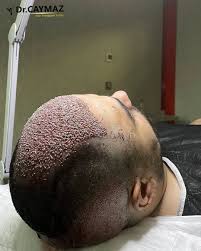If you or someone you love has ever felt that sudden, overwhelming wave of fear out of nowhere, you’re not alone. Panic disorder is real, and it can be life-altering. But here’s the good news: we’re living in a time when new, more effective treatments are emerging. In this blog, we’ll explore some of the most exciting and promising panic disorder therapies that are offering genuine relief to people every day. Let’s break this down in a way that feels approachable and hopeful.
Understanding Panic Disorder
Before diving into the therapies, it’s essential to understand what panic disorder is. It’s more than just feeling anxious. Panic disorder is marked by recurring and unexpected panic attacks — sudden periods of intense fear that come with physical symptoms like heart palpitations, chest pain, dizziness, or shortness of breath. These episodes can make someone feel like they’re losing control, having a heart attack, or even dying.
Over time, the fear of having another panic attack can lead to avoidance behaviors, further affecting daily life. But with the right treatment approach, it doesn’t have to stay that way.
Why Traditional Methods Don’t Work for Everyone
Traditional treatments like medication and cognitive behavioral therapy (CBT) have been widely used — and yes, they do help many people. However, they don’t work for everyone. Some experience side effects from medications, while others might not respond well to standard CBT. That’s where breakthrough therapies come in.
Let’s take a look at what’s new and what’s working.
1. Virtual Reality Exposure Therapy (VRET)
Yes, it sounds like something out of a sci-fi movie, but virtual reality is making waves in the mental health world. VRET allows individuals to face the triggers of their panic attacks in a controlled, immersive environment.
Imagine being able to confront your fears — whether it’s crowded spaces, elevators, or driving — while knowing you’re completely safe. That’s the beauty of VRET. It’s helping patients build tolerance to panic-inducing situations without actual exposure in the real world, making it a game-changer for many.
2. EMDR (Eye Movement Desensitization and Reprocessing)
Originally developed for PTSD, EMDR is gaining recognition as one of the innovative panic disorder therapies. The therapy involves guided eye movements while recalling traumatic or anxiety-provoking events. Over time, it helps reduce the emotional intensity tied to those memories.
Many therapists now use EMDR to help individuals with panic disorder process past trauma that might be contributing to their current symptoms. And the results have been incredibly encouraging.
3. Ketamine-Assisted Therapy
Ketamine, once known solely as an anesthetic, is showing promise in treating various mood disorders, including panic disorder. In controlled settings, low doses of ketamine are administered under medical supervision while the patient undergoes talk therapy.
This combination can help individuals access and process emotions that were previously too overwhelming. It’s fast-acting compared to traditional antidepressants and has shown potential to reduce the severity and frequency of panic attacks.
4. Somatic Experiencing
Sometimes, our bodies hold onto trauma in ways we don’t consciously realize. Somatic experiencing focuses on bodily sensations rather than thoughts or memories. It teaches individuals to tune into their physical responses and release the tension and energy that fuel panic attacks.
This body-first approach can be particularly effective for people who feel disconnected from traditional talk therapy. By helping the body feel safe again, panic symptoms can significantly decrease.
5. Neurofeedback Training
Ever wish you could train your brain like a muscle? Neurofeedback might be the answer. It involves monitoring brain activity in real time and training the brain to function more optimally.
For panic disorder, neurofeedback has been shown to help regulate brainwave patterns associated with anxiety and panic. While it may sound complex, it’s non-invasive and increasingly available at mental health clinics.
6. Mindfulness-Based Cognitive Therapy (MBCT)
MBCT is a fusion of mindfulness practices and cognitive therapy. It encourages people to observe their thoughts without judgment and helps them respond more calmly to stress. This approach is particularly helpful for those with panic disorder because it teaches awareness and self-compassion.
Over time, many patients report fewer panic attacks and a stronger sense of control over their emotions.
7. Tapping (Emotional Freedom Technique or EFT)
Tapping might look a little odd at first, but don’t knock it till you try it. This technique involves tapping on specific acupressure points while focusing on feelings or memories related to panic.
It’s simple, can be done at home, and has helped many people find relief from anxiety and panic symptoms. It combines elements of exposure therapy, cognitive restructuring, and physical stimulation.
Finding the Right Fit
It’s important to remember that no single therapy works for everyone. What brings relief to one person might not work for another, and that’s okay. The key is being open to exploring different options and working with a mental health professional who’s willing to try new approaches.
Breakthrough therapies don’t mean abandoning traditional methods; often, they work best when used in combination. For example, someone might benefit from both CBT and neurofeedback or use EMDR alongside mindfulness techniques.
FAQs About Panic Disorder Therapies
Q: Are these therapies safe?
Yes, when administered by trained professionals, all the therapies mentioned above are considered safe. Always consult a licensed mental health provider before beginning any treatment.
Q: How do I know which therapy is right for me?
That depends on your symptoms, history, and preferences. It’s a good idea to consult with a therapist who has experience in multiple therapeutic techniques.
Q: Can I combine multiple therapies?
Absolutely. Many people find that a combination of therapies offers the most comprehensive relief.
Q: Are these therapies long-term solutions?
Some people experience lasting results, while others may need ongoing support. It varies from person to person.
Q: What if I’ve tried everything and nothing works?
Don’t give up. New therapies are being developed constantly. Sometimes, it’s just about finding the right fit for your unique needs.
In Conclusion
Panic disorder can feel isolating, scary, and exhausting — but it’s also manageable. With the rise of breakthrough panic disorder therapies, there’s more hope than ever before. Whether you’re just starting your journey or you’ve been looking for new solutions, don’t hesitate to explore these newer options. You deserve relief. You deserve to feel safe in your own body again. And with the help of innovative therapies and compassionate professionals, that’s more possible than ever. Remember, healing isn’t always a straight line. Be kind to yourself along the way, and know that help is out there — real, effective, and waiting for you.



